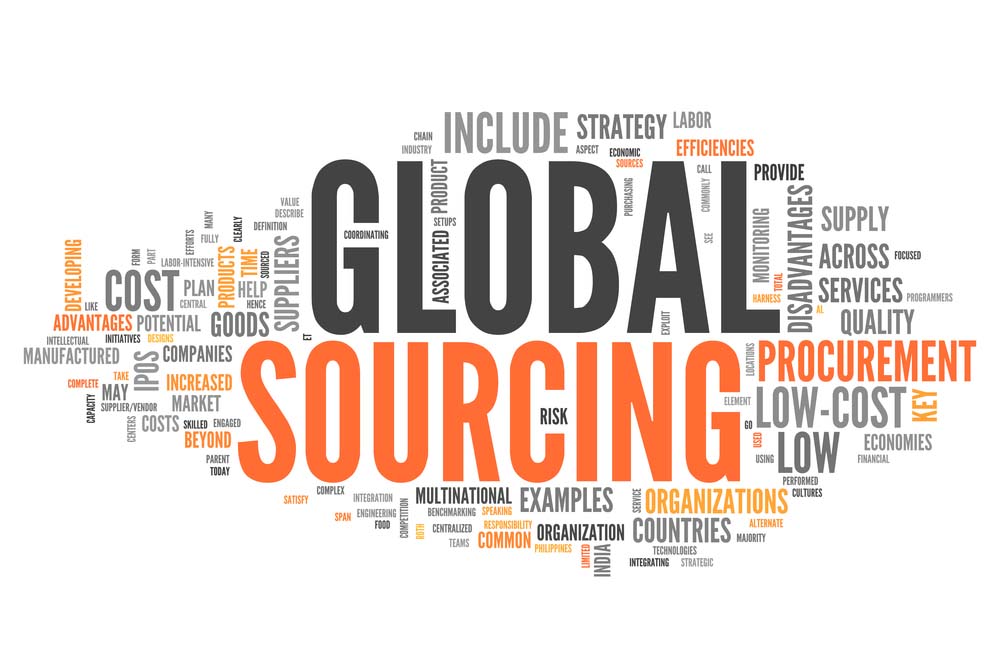
Deciding what to sell on Amazon is the first hurdle that stands between you and a profitable future. But don’t celebrate too much because once you have decided what to sell, you need to decide where to source it.
Finding the right source for your product is an intricate part of your success on Amazon. You require a source that will offer you high quality products for the best possible price and deliver on shipments when you need them. If your source or supplier is not able to deliver on time or give you consistent quality, you are going to pile up negative customer reviews. If you are not getting the lowest price possible, your profits margins are not going to be as large as they could be. None of these situations are ideal for you or your business.
You need a supplier that will, in essence, support your business not weigh it down.
To begin this search, you need to decide whether you want to source overseas or domestically. Both have their advantages and their drawbacks.
Overseas sourcing:
Whether you’re manufacturing or buying wholesale, the cost of overseas sourcing is often lower than domestic sourcing. Manufacturing is big overseas and so you will have a range of options to choose from. But purchase price and selection should not be the only factor in your decision. Customers often perceive products that come from overseas, particularly Asian markets, as being lower quality which may impact the way they view your brand. When going overseas it can be harder to guard your intellectual property and you may run into language or cultural barriers that make communicating next to impossible. It can be difficult to verify overseas suppliers and you do not know the working conditions for the employees. You’ll also have to contend with longer shipping waits and potential difficulties clearing customs.
Domestic sourcing:
Domestic sourcing often provides a higher quality product, but you will pay more for that quality. It is easier to verify the legitimacy of North American suppliers and manufacturers and you can expect that labor standards will be up to code. Wait times for shipping will be shorter but there will a small range of options compared to going overseas.
Once you’ve decided between overseas and domestic sourcing, you can actually begin your search. Here are some places you can look for a supplier that best suits your needs:
Online Directories
Supplier directories are great place to start. They give you access to thousands of options and added information that can help you narrow down your choices. For domestic sourcing, try ThomasNet, Makers Row, and/or Kompass. If you are looking to go overseas for your product, try Sourcify, Alibaba, and/or IndiaMart.
This is not a comprehensive list of directories so if you are unable to find what you are looking for in one of these places, your ideal solution is still out there so don’t lose hope.
The Library
That’s right, the answer to your product sourcing may be found in your local library. Sometimes libraries have access to business and manufacturer directories. These directories provide detailed information about many North American manufacturers, distributors and wholesalers. Access to these directories are limited and often require a subscription. Instead of shelling out the money yourself, take advantage of the fact that your library may have access. Give them a call to see and if the answer is yes, do not hesitate to utilize this resource.
Referral
Talk to the people you know. Networking can provide a wealth of answers. The people in your circle may have information that can help or they may even have the name of a supplier that’s a perfect fit for you. Strangers may view you as competition and not want to share their knowledge but your friends and family, and people in any networking groups you belong to will likely be more than willing to share what they know. Even if they don’t offer you the right solution, you can use the information they give to narrow down the field.
Don’t Forget Google
If finding a supplier were as easy as a quick Google search, there would be no need for articles like this one. But just because a simple search won’t cut it, it doesn’t mean that Google can’t be useful. In many instances, supplier websites have not been updated in a long time and they’ve not likely been optimized meaning they will appear very low in a search results. You may have to scroll through dozens of pages before you find useful information but you will find useful information. To help increase the effectiveness of your Google search, try using multiple search words like “wholesaler,” “wholesale,” “distributor,” and “supplier.” These terms are often used interchangeably so if you search them all, you are likely to get better results.
Finding the right source for your products is pivotal to the success of your business. The right partnership can get you a quality product that satisfies your customers and makes you a lot of money. Knowing where to start looking for this partnership is half the battle. Remember, there is no one size fits all solution and at the end of the day, you have to decide what is right for your own business. This list can set you on the right path, but ultimately the direction you take is up to you.

0 Comments